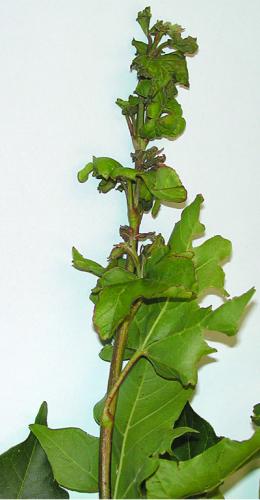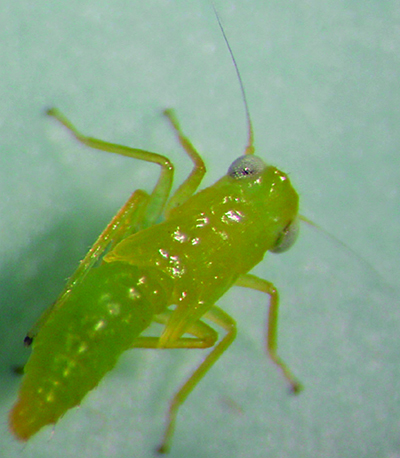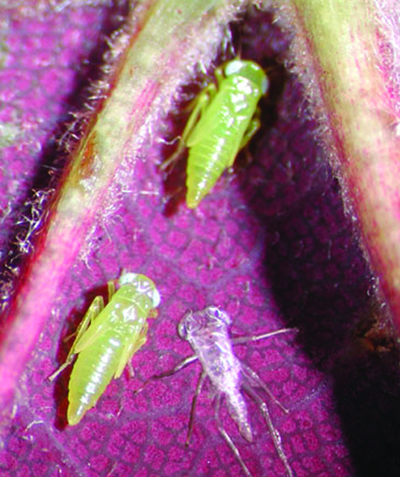Potato leafhopper
July 30, 2015
 Empoasca fabae
Empoasca fabae
Potato leafhopper is a pest of many agricultural crops. Trees most likely to be damaged are maples (especially red, Norway and sugar), birch, apple and crabapple, and viburnum. Potato leafhoppers overwinter in the southern U.S. along the Gulf Coast and travel to the north via wind currents and storms, usually during May to mid-June. The result of their feeding is apical growth with stunted, curled leaves that resembles herbicide injury.
Management
Potato leafhoppers have many natural enemies that may help reduce their numbers in the landscape. However, damage to red maples is common, especially in rural areas. Scout by looking for the white-eyed, yellow-green nymphs and adults on the undersides of leaves. The leafhopper runs sideways when disturbed. Examine four shoots, one on each side of the tree. According to Dr. Cliff Sadof of Purdue University, consider using an insecticide if an average of three leafhoppers per shoot (12 insects per four branch samples) is found.


Adult leafhoppers are about 3.2 mm long; nymphs are even smaller; white object is shed skin. 3.2 mm.
Print a PDF of this page: Potato leafhopper



 Print
Print Email
Email



